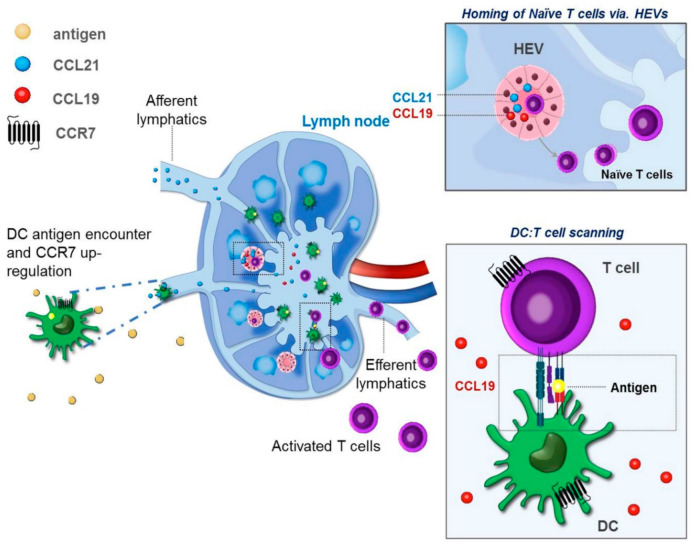Figure 2.
Based on their differential tissue expression and signaling properties, the chemokines CCL19 and CCL21 exert different functions in vivo. CCL21 is believed to be the major lymph node (LN)-homing chemokine, directing the LN localization of activated CCR7+ dendritic cells (DCs) through afferent lymphatics. As both CCL19 and CCL21 are present in high endothelial venules (HEVs) and T cells enter the LN through the HEVs, both CCL19 and CCL21 appear to be important for directing the localization of CCR7+ T cell subsets (naïve, memory, and Treg) to the LN. CCL19 secreted by active DCs in the LN partakes in the subsequent scanning and DC–T cell priming process, directing T cells to interact with the DCs. The rapid internalization of CCR7 occurring upon receptor engagement with CCL19 allows for a swift DC–T cell interaction and allowing for the scanning process to occur.

